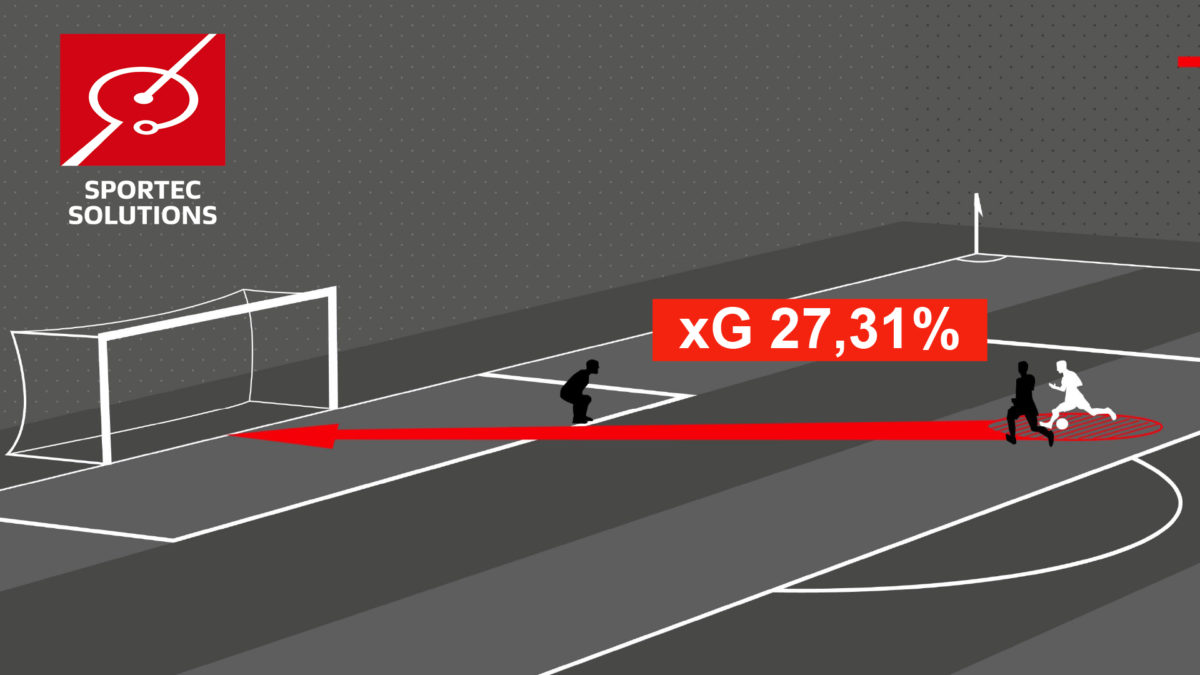xGoals: changing how we evaluate goalscoring chances

01 April 2019 – Algorithms are helping to remove the element of speculation from one particular area of football analysis. Whereas it was previously common to hear match commentators or fans insisting that a player ‘should have scored’ a particular chance, the introduction of the xGoals (expected goals) metric can now tell us definitively how good a goalscoring chance actually was, taking away the need to rely on the naked eye.
In the Bundesliga, Sportec Solutions provides that information. As a joint venture of the DFL and deltatre, Sportec Solutions continues to lead the way when it comes to match data and sports technology. The development of xGoals is yet another example of its commitment to innovation.
Put simply, xGoals is the probability of any shot taken to result in a goal. It weighs up the difficulty of a chance by analysing a number of relevant factors to produce a probability figure (between 0 and 1) for whether a goal ought to have been scored from the given situation. Unlike other providers, Sportec Solutions uses an algorithm that recognises not only event data, but also positional data, thereby improving the accuracy of the information.
Factors used in determining that probability include the angle of the shot, the shooter’s distance from goal, the speed they are running at, whether there is an opponent marking them or not, where the goalkeeper is positioned and whether there are other defenders between the shooter and the goal.

1 / 4 
2 / 4 
3 / 4 
4 / 4
The probability figure is calculated by using an algorithm that compares a shot against more than 40,000 similar efforts stored in the official Bundesliga database, and applying the conversion rate of those chances using a technique called boosted regression. The xGoals percentages for all of the shots taken over the duration of a match can be combined to provide an accurate and neutral representation of how many goals a team ought to have scored against how many they actually did score, thus enabling the quality of their shooting to be measured.
xGoals can also be used to assist in other ways. A goalkeeper’s performance can be assessed by looking at the goals conceded and whether, in terms of probability, they could have been saved.
The new statistic also enables a thorough examination of whether the scoreline in a match is a fair reflection of what took place on the pitch. The coach of a losing team will often say their team deserved to win because of the number of chances created. xGoals can give a clinical breakdown of these numbers. Striker’s performances can also be evaluated using more than simply their goal tally: How often did they get into the right areas on the pitch, get their shot away and convert those scoring opportunities?
Dr Hendrik Weber, Managing Director of Sportec Solutions and the DFL’s Head of Technology and Innovation, said: ‘By using both official positional and event data, we can improve the accuracy of how each opportunity is examined to give a much clearer defined probability. This is an area with lot growth potential, and Sportec Solutions will further investigate NextGen stats that have relevance to the game.’
Expected goals (xG) is a model that can be used to assess every goalscoring chance, and to determine whether a player should have scored from a certain opportunity. Some of the variables that affect this probability are illustrated in this clip: